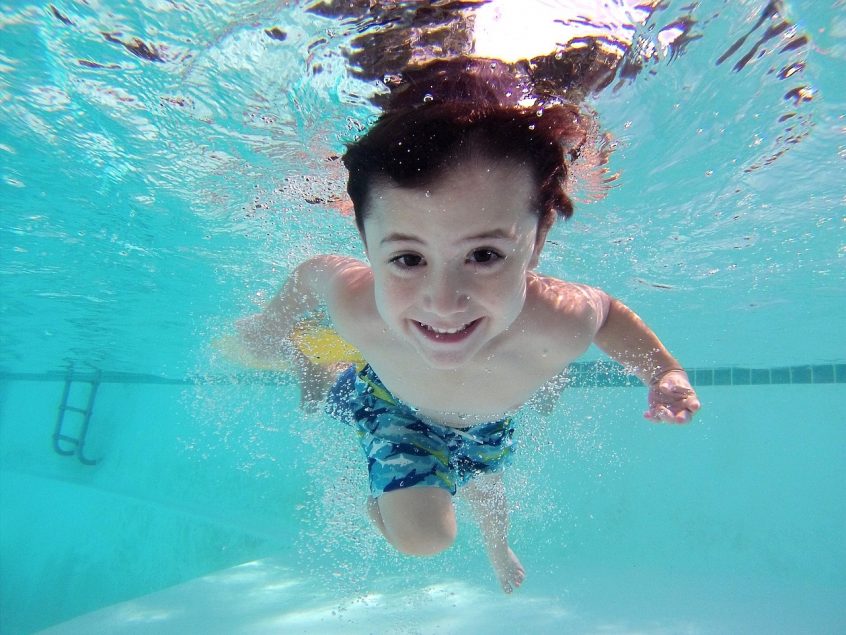Ten years ago, less than five per cent of Canadian and U.S. inground pool owners had heard of salt chlorination; fewer still (less than one per cent) had salt chlorination systems installed on their pools.
However, in the U.S. today, there are an estimated 1.3 million inground pools equipped with salt systems, comprising 20 per cent of the country’s 5.2 million inground pools. In addition, more than 60 per cent of the U.S. pool owner population are aware, at least to some degree, of salt chlorination technology. In Canada, the numbers are equally remarkable—roughly 90,000 of the country’s 380,000 inground pools (about 24 per cent) are equipped with salt chlorination systems. It is also estimated that more than 75 per cent of Canadian inground pool owners are aware this technology exists as a means of pool sanitization.
A catalyst for change
While popularized in Australia more than 30 years ago, salt chlorination technology only caught the attention of major North American pool equipment manufacturers in the late 1990s. The basic technology comprises a set of equally-spaced titanium electrodes, coated with a precious metal catalyst that, when placed into a solution of saltwater and subjected to a voltage potential, will cause a flow of current that converts the chloride ions present into chlorine.
The electrolytic process

Figure 1
Specific design details are proprietary to each manufacturer, but all systems obey the same electrolysis reaction pathway (see Figure 1), in which chloride ions from the dissolved salt are converted to chlorine gas, producing byproducts such as hydrogen gas and alkali (e.g. sodium hydroxide):
2NaCl + 2H2O → Cl2
+ 2NaOH + 2H2 [Reaction 1]
A common misconception is that a saltwater pool has the salinity of ocean water when, in fact, it has less salinity than a human tear, making it virtually tasteless and natural for pool owners.
The growth of salt chlorination
The most basic product promise for salt chlorination systems is the automatic (and convenient) generation of the requisite chlorine sanitizer, which, in turn, provides a more enjoyable pool ownership experience. The automatic generation of chlorine has been found to resonate favourably with most pool owners who continually report that pool maintenance—particularly pool chemistry management—detracts from the overall satisfaction of pool ownership.
“Most consumers, at least initially, do not fully appreciate that pool ownership requires some effort with respect to maintenance,” says Paul Jameson of Jameson Pools in Mississauga, Ont. “The advent of salt chlorination systems has significantly enhanced overall pool ownership satisfaction. That is why many pool builders, including myself, outfit new pools with a salt chlorination system.”
Another advantage of salt chlorination is the significant reduction in skin and eye irritation, chlorine odours and faded swimwear. These benefits are made possible by the use of mild saline solutions and elimination of chlorine highs and lows that result from the regulation of the chlorine production. Interestingly, this enhanced swimming experience often trumps the system’s other benefits.
“While many of our customers originally purchase a salt system for the convenience of chlorine generation, it is the swimming experience they rave about most,” says Alain Hudon of Montreal-based Piscine Hudon.
Market forces drive change
The rapid penetration of salt chlorination systems on North American inground pools can be attributed to more than just the merits and value of the technology. In fact, there are several influences at play.
Over the last three years, the pool business has experienced the confluence of an economic downturn and significant price increases in conventional chlorine. These two events have likely bolstered the sales of salt chlorination, as pool builders sought out much-needed revenue from their existing customer base.

Billboard advertisement for salt chlorination. These ads would not have been found even a few years ago, but have proven effective in geographic regions with a high density of pool owners.
Also, consumers invested in more affordable ‘staycations,’ leaving them receptive to alternative sanitizing solutions in the face of escalating chlorine prices, which have brought the payback period on salt chlorination systems down to less than three years. This may have been a significant underlying force for growth.
Additionally, the tremendous growth in salt systems in Canada and the U.S. between 2005 and 2007 (215 and 60 per cent, respectively) occurred concurrently with an explosion in social media. This created an increasing probability that inground pool owners would encounter friends, family, neighbours and other online acquaintances who were satisfied salt system owners, helping drive greater technology awareness and product sales.
Finally, since 2006, several new salt system manufacturers have entered the North American market, which has helped to drive greater product awareness through increased marketing and advertising. Unlike 10 years ago, it is now commonplace for pool owners to learn of salt chlorination through pool catalogues, newspaper ads and pool builders and service professionals, not to mention the Internet, radio spots, billboards and transit-based advertisements. Despite the shorter swimming season in Canada, consumer awareness of salt chlorination is slightly higher than in the U.S. (75 per cent, compared to 60 per cent). This is believed to be a result of the higher geographic density of pool owners that can be more easily reached through various forms of advertising.
Marketing channels and penetration
Salt chlorination has certainly gained more acceptance, rivalling conventional liquid and tablet chlorine as a sanitization system for new pools in both the U.S. and Canada. The evidence lies in the actions of the pool builders themselves.
Today, approximately 70 to 80 percent of all new pools being constructed in North America are equipped with salt chlorination. It is fortunate that, with the nearly 80 per cent reduction in new pool construction since 2006, the salt chlorination business has not been strictly tied to new pool construction. In 2010, about 75 per cent of salt chlorination system sales were aftermarket sales; only an estimated 25 per cent of sales were done through new pool construction. These aftermarket sales are being driven by large North American ‘bricks and mortar’ and Internet-based retailers. In fact, the growth rate of salt systems in the pool service channel in the U.S. has been estimated at approximately 50 per cent from 2007 to 2010. This type of aftermarket activity has prevented what could have been a disastrous outcome for the salt chlorination business during the economic crisis of the past few years.
Despite the widespread acceptance of salt chlorination, there are regional differences in market penetration. Naturally, there has been greater penetration in the ‘sunbelt’ market versus the ‘frostbelt’ areas.4 In these warmer regions, where pools may be open 12 months of the year, the convenience of automatic chlorine production is very compelling to many inground pool owners. In fact, in sunbelt areas, the cost of ownership of a salt chlorination system is generally less than conventional chlorine over the lifetime of the product.
| DRIVING MARKET FORCES BEHIND SALT CHLORINATION GROWTH |
|---|
| • Rising chlorine prices, which makes salt chlorination a more attractive sanitization option; • Rising consumer awareness, due to more product offerings, consumer and word-of-mouth advertising (including social media); • Economic downturn, which lead to more ‘staycations’ and backyard investment; and • Pool builders and service professionals creating awareness. |
The tipping point
Generally speaking, a market has reached a tipping point when a critical mass is achieved that enables an irreversible development. Has the salt chlorination business reached such a milestone? In short, even with the positive indications described above, it is too early to be sure.
The greatest influencing factors in the future will be the market price of chlorine versus that of ruthenium. Ruthenium is the precious metal catalyst that comprises the majority of the cost of a salt chlorination system. As long as the price ratio of these key raw materials stays within a certain range, salt chlorination should continue to gain greater market penetration. This, of course, assumes no new technology for pool sanitization will be invented or introduced; given the dominance of chlorine as the water sanitizer of choice for the last century, this seems unlikely. Furthermore, it also assumes salt chlorination technology is stagnant. However, many new salt chlorination developments have been recently introduced, while others are imminent.
Finally, with each passing day, a greater number of pool and spa retailers are experiencing firsthand the profitability and customer satisfaction that comes with the promotion of a salt chlorination system. Hesitance to promote the technology—perhaps due to its potential to decrease store foot traffic, thanks to the longevity of a single salt cell—is waning. With nearly four million inground pools in North America not equipped with salt chlorination and new construction near all-time lows, the future of salt chlorination may still be uncertain. However, by any measure, it will be played out in the aftermarket and promises to be an exciting business for years to come.
This article was written by Ray Denkewicz and originally appeared on Pool & Spa Marketing [link].
